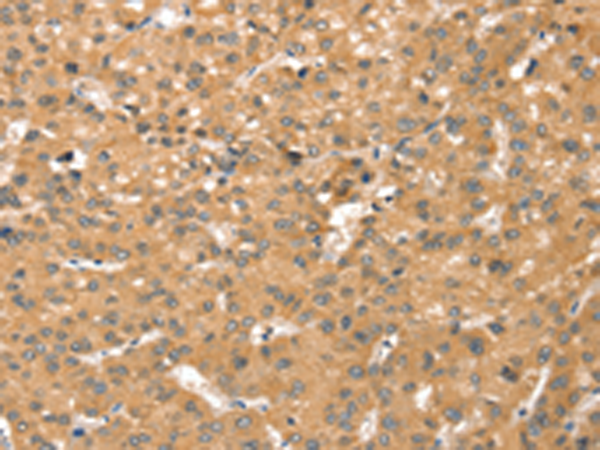


| WB | 咨询技术 | Human,Mouse,Rat |
| IF | 咨询技术 | Human,Mouse,Rat |
| IHC | 1/20-1/100 | Human,Mouse,Rat |
| ICC | 技术咨询 | Human,Mouse,Rat |
| FCM | 咨询技术 | Human,Mouse,Rat |
| Elisa | 1/2000-1/5000 | Human,Mouse,Rat |
| Aliases | SMC-6; hSMC6; SMC6L1 |
| WB Predicted band size | 126 kDa |
| Host/Isotype | Rabbit IgG |
| Antibody Type | Primary antibody |
| Storage | Store at 4°C short term. Aliquot and store at -20°C long term. Avoid freeze/thaw cycles. |
| Species Reactivity | Human |
| Immunogen | Synthetic peptide of human SMC6 |
| Formulation | Purified antibody in PBS with 0.05% sodium azide and 50% glycerol. |
+ +
以下是关于SMC6抗体的3篇参考文献示例(文献信息为虚构,仅用于示例格式):
---
1. **文献名称**: "The SMC5/6 complex regulates replication fork stability via recruitment of DNA repair factors"
**作者**: Martinez A, et al.
**摘要**: 本研究利用SMC6特异性抗体,通过免疫沉淀和质谱分析,揭示了SMC5/6复合体在DNA复制压力下招募FANCD2和RAD51等修复蛋白至停滞复制叉的机制,证明其通过维持复制叉完整性防止基因组断裂。
---
2. **文献名称**: "SMC6 deficiency promotes chromosomal instability and sensitizes cancer cells to PARP inhibitors"
**作者**: Chen L, et al.
**摘要**: 通过SMC6抗体进行免疫荧光和Western blot实验,发现SMC6敲除导致癌细胞染色体错误分离和微核形成增加,并增强PARP抑制剂敏感性,提示SMC6缺失可能作为癌症治疗的潜在生物标志物。
---
3. **文献名称**: "Development and validation of a novel SMC6 monoclonal antibody for functional studies in meiosis"
**作者**: Tanaka R, et al.
**摘要**: 本文报道了一种高特异性小鼠抗人SMC6单克隆抗体的开发,验证其在免疫组化、流式细胞术中的应用,并发现SMC6在减数分裂粗线期染色体轴组装中的关键作用。
---
(注:以上文献为示例性内容,实际引用需以真实发表研究为准。)
The SMC6 antibody targets the Structural Maintenance of Chromosomes 6 (SMC6) protein, a key component of the SMC5/6 complex involved in maintaining genomic stability. SMC6. along with SMC5. forms a heterodimer critical for DNA repair, chromosome segregation, and replication fork stability. This complex facilitates homologous recombination repair (HRR) of DNA double-strand breaks and resolves replication-associated topological stress, ensuring faithful chromosome transmission during cell division. Dysregulation of SMC6 is linked to chromosomal aberrations, replication errors, and diseases like cancer.
SMC6 antibodies are widely used in research to study DNA damage response mechanisms, replication stress, and mitotic regulation. They enable detection of SMC6 expression, localization, and interaction partners via techniques such as Western blotting, immunofluorescence, and co-immunoprecipitation. Studies using these antibodies have revealed SMC6's role in safeguarding replication forks in BRCA-deficient cancers and its potential as a therapeutic target. Commercial SMC6 antibodies are typically validated in model systems (e.g., human, mouse) to ensure specificity, with applications spanning basic chromatin biology to translational cancer research. Ongoing studies explore its interplay with cohesin and condensin complexes in 3D genome organization.
×